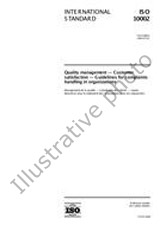We need your consent to use the individual data so that you can see information about your interests, among other things. Click "OK" to give your consent.

ISO 16063-45:2017
Methods for the calibration of vibration and shock transducers — Part 45: In-situ calibration of transducers with built in calibration coil
Translate name
STANDARD published on 17.5.2017
The information about the standard:
Designation standards: ISO 16063-45:2017
Publication date standards: 17.5.2017
SKU: NS-684378
The number of pages: 17
Approximate weight : 51 g (0.11 lbs)
Country: International technical standard
Category: Technical standards ISO
The category - similar standards:
Annotation of standard text ISO 16063-45:2017 :
Description / Abstract: ISO 16063-45:2017 specifies the calibration of vibration transducers with built-in calibration coils in laboratory and in situ. In laboratory, the method described can be applied to calibrate the vibration sensitivity and electrical sensitivity, and to obtain the coefficient of calibration coil. In situ, it can be used to calibrate the electrical sensitivity and vibration sensitivity using electrical instrumentation. ISO 16063-45:2017 specifies the instrumentation and procedure for performing calibrations of vibration transducers with built-in calibration coils in the frequency range typically from 0,1 Hz to 100 Hz. The expanded uncertainty can be evaluated using the method given in this document.
We recommend:
Technical standards updating
Do you want to make sure you use only the valid technical standards?
We can offer you a solution which will provide you a monthly overview concerning the updating of standards which you use.
Would you like to know more? Look at this page.



 Cookies
Cookies
